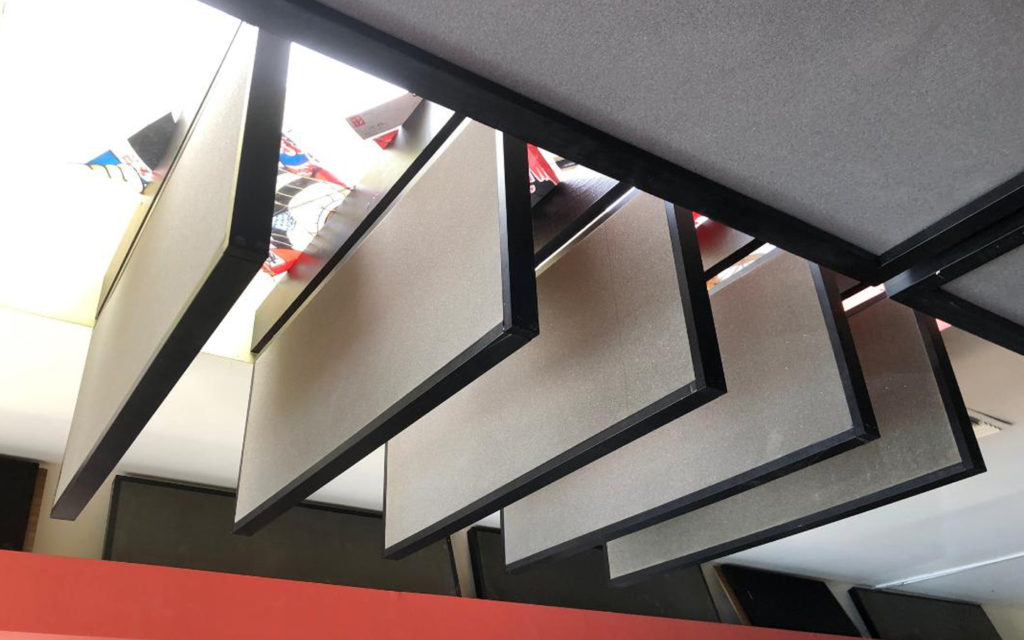
Table of Contents
Decoding Discount Acoustic Foam: Affordable Sound Solutions Explained
The search term discount acoustic foam sounds like an accident waiting to happen. What is discount acoustic foam? Why are you using discount acoustic foam? When you are using sound absorption technology, you must know two things. You must know the frequency and amplitude of the sound you are working with or against. You must know the performance of discount acoustic foam or whatever marketing name that is currently applied to open celled foam. There are two main types of foam.
There is a closed cell foam which is designed to provide structural support like a seat cushion or couch pillow. Open celled foam is just what the name implies. Its cells are open to receive air movement across its surface. As air flow moves across the surface it enters the open cells and this process creates friction which translates to heat. Heat is an energy transformation, thus absorption of energy occurs.
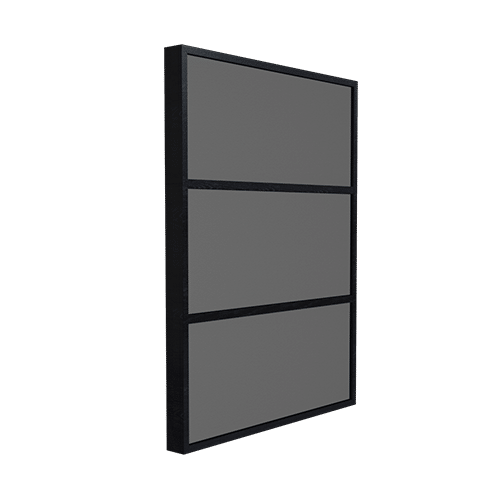
The Importance of Precision: Matching Acoustic Foam to Noise Issues
When using or applying any acoustical tool such as open celled discount acoustic foam, you must recognize that this is a tool that is specific and narrow in its use. The common error people make is not choosing the correct rate and level of absorption to treat their noise problem. You must apply the correct acoustic foam type to your noise issue which must be measured first and foremost. Most acoustic foam issues fall into the reverberation category.
Reverb is defined as to how long a sound stays around within a room after it has been sung, spoken, or played. Reverb is a measure of decay rates and levels. You must identify the frequency range of your reverberation issue. Most reverb issues, whether large or small rooms, fall into the 125 hz. – 500 hz. range. You must also absorb 75% of that 125 hz. energy. This is where people fail.
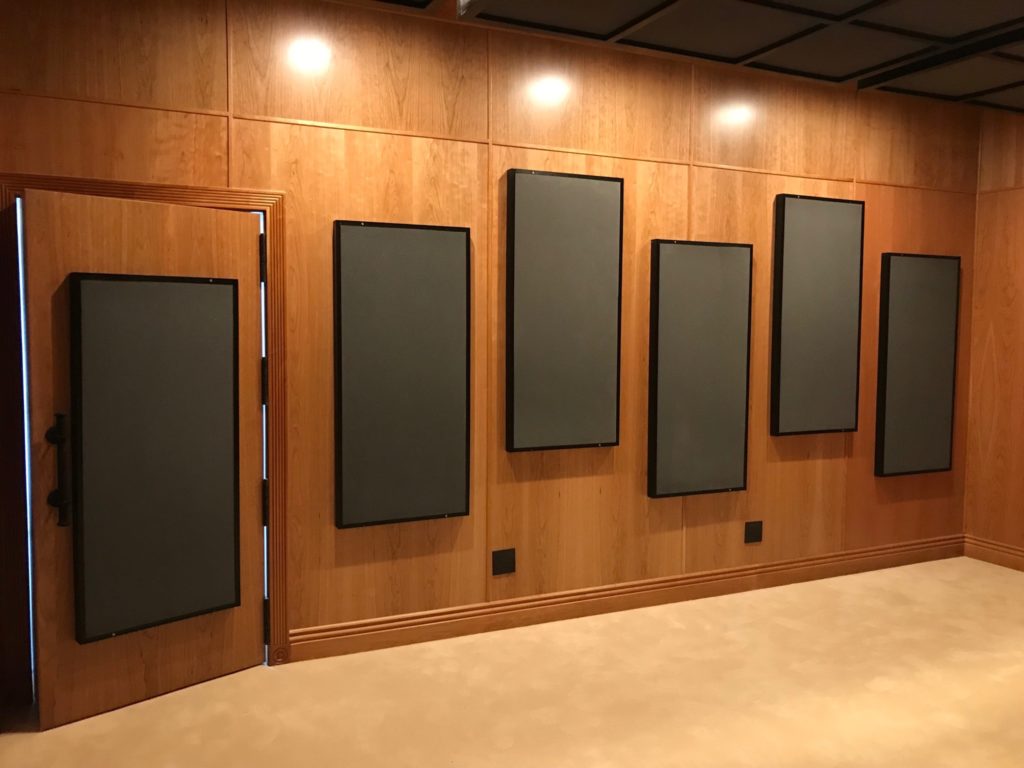
Sound Behavior in Rooms: Tailoring Acoustic Treatments for Frequencies
When you are dealing with rebereration, you are dealing with the room surface areas. You are dealing with the four walls, floor, and ceiling. Each one is contributing around 17% to the overall reverberation time within the room. When sound energy enters the room from your speakers or instruments it heads right for a wall. It wants to get out of the room. It is trying to escape captivity. It can not and three things happen. Part of the energy goes through the wall.
Part is absorbed by the wall. The third issue is the one we must treat. It is the reflected energy from the room’s surface areas. Each wall, floor, and even the ceiling fire back 17% worth of reflections into the room and those reflections juxtaposition themselves onto the other 17% from each surface area. We must reduce 75% of the amplitude or strength of the 125 hz. – 500 hz. We must use the proper discount acoustic foam or foam that will accomplish this goal. At Acoustic Fields, our foam technology took 8 years and 2 million to create. It is the smoothest curve ever for an open celled foam.
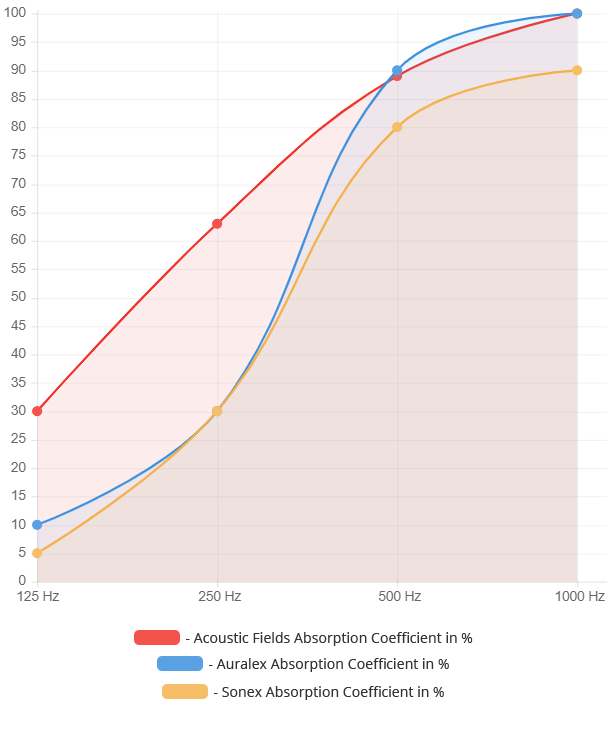
The Critical Role of Room Surfaces in Sound Absorption with Foam
Not all acoustic or open celled foams are created equal. Most currently in the marketplace are a joke. Most create more problems than they treat. Refer to the graphic of the top three foams in the marketplace. Notice the two below the red line. Notice how they have issues in the 250 hz. region. How can you treat a 250 hz. problem if you can not absorb at 250 hz. The red line at the top is our foam technology at Acoustic Fields.
You can see the smooth progression in the rate of absorption from 125 hz. – 500 hz. This frequency range from 25 – 500 hz. is the most critical for music, voice, and reverberation. You must provide a smooth rate or you end up with a presentation value that is still too bright or too dull and lifeless. When it comes to music and voice, it is all about the rate of absorption from 125 – 500 hz.
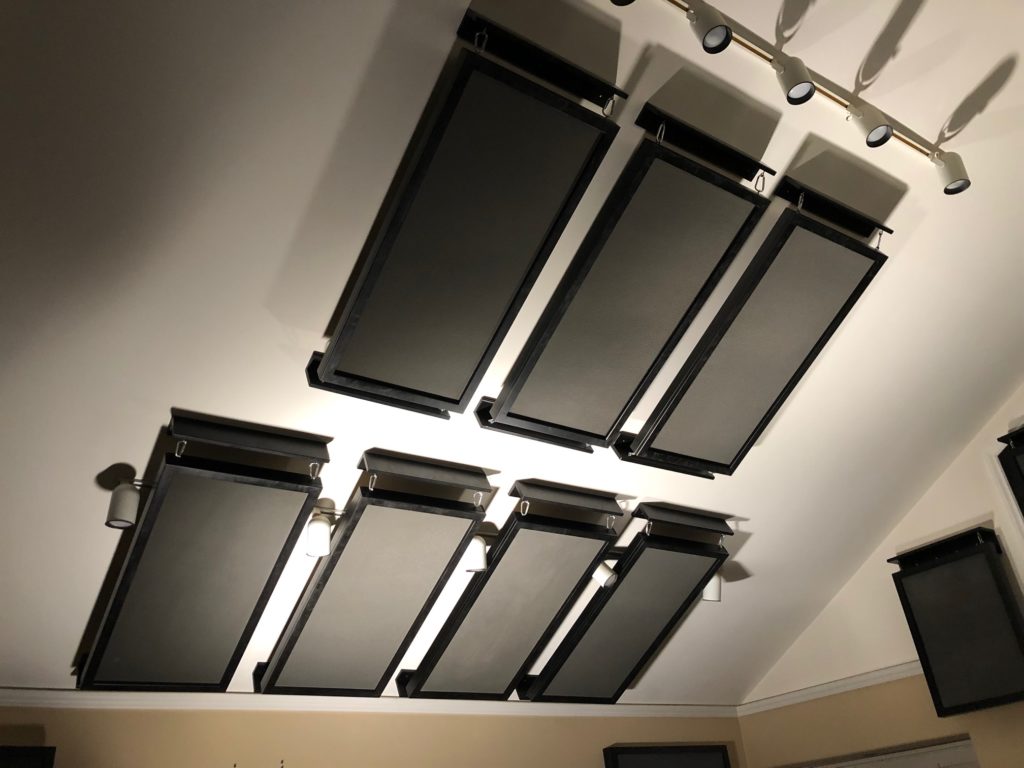
Choosing the Right Acoustic Foam Depth for Effective Reverberation Control
Using a discount acoustic foam or an expensive acoustic foam, the first thing you must do is match the performance of the foam with the frequency and amplitude range of the noise issue you are addressing. You must be able with your foam to go low enough and get enough in order to produce an audible difference in the sonic values within the room.
We see a lot of foam panels that are 1″, 2″, 3″, 4″ deep that are advertised as the solution for absorbing enough energy within the 125 – 500 hz. range to treat reverberation in large rooms such as churches and auditoriums. You can not absorb enough energy within those depths to have enough of an impact on the frequency range from 125 hz. – 500 hz. to have the audible impact you are looking for. When using an open celled foam absorbing panel look for a minimum of 6″ in product depth.


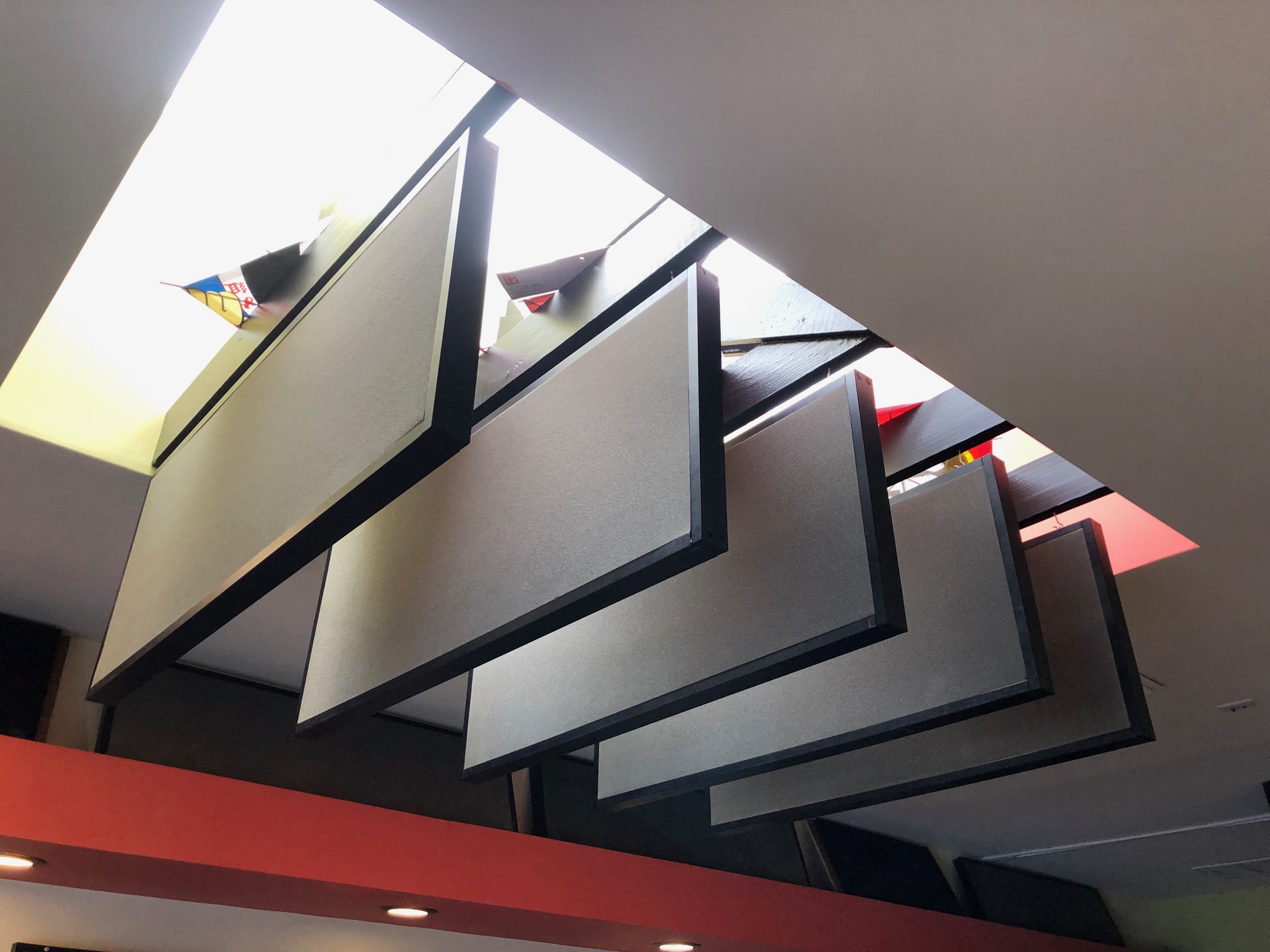





The discussion on ductwork noise transmission from Acoustic Fields highlights crucial aspects of HVAC system acoustics. The movement of air…
Great build plans. thank you Denis
You must use absorption. Never place a chair against a wall.
A friend and I built several diffusors using these plans and they turned out absolutely beautiful. Very good instructions and…